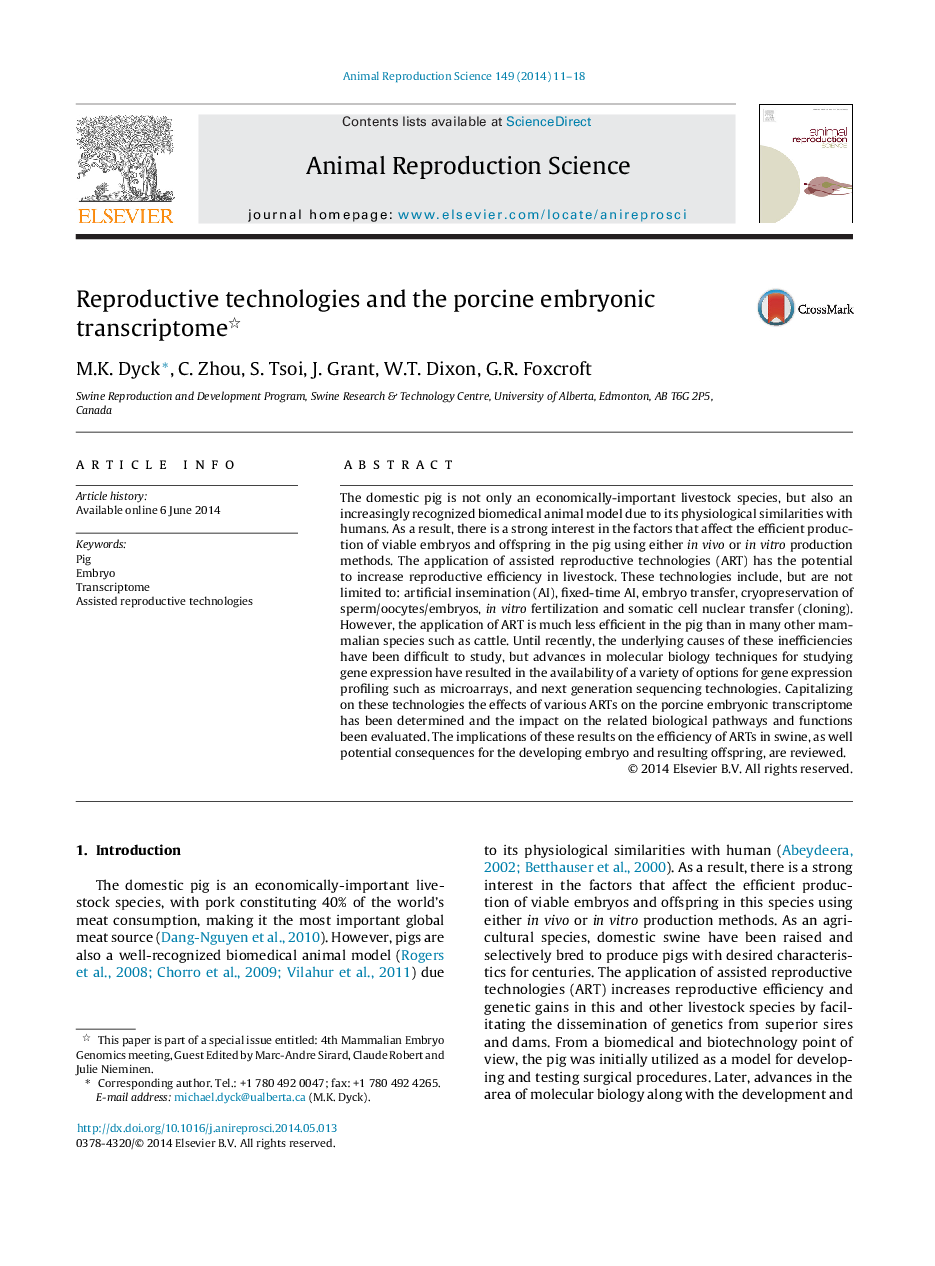| کد مقاله | کد نشریه | سال انتشار | مقاله انگلیسی | نسخه تمام متن |
|---|---|---|---|---|
| 2072789 | 1544731 | 2014 | 8 صفحه PDF | دانلود رایگان |
The domestic pig is not only an economically-important livestock species, but also an increasingly recognized biomedical animal model due to its physiological similarities with humans. As a result, there is a strong interest in the factors that affect the efficient production of viable embryos and offspring in the pig using either in vivo or in vitro production methods. The application of assisted reproductive technologies (ART) has the potential to increase reproductive efficiency in livestock. These technologies include, but are not limited to: artificial insemination (AI), fixed-time AI, embryo transfer, cryopreservation of sperm/oocytes/embryos, in vitro fertilization and somatic cell nuclear transfer (cloning). However, the application of ART is much less efficient in the pig than in many other mammalian species such as cattle. Until recently, the underlying causes of these inefficiencies have been difficult to study, but advances in molecular biology techniques for studying gene expression have resulted in the availability of a variety of options for gene expression profiling such as microarrays, and next generation sequencing technologies. Capitalizing on these technologies the effects of various ARTs on the porcine embryonic transcriptome has been determined and the impact on the related biological pathways and functions been evaluated. The implications of these results on the efficiency of ARTs in swine, as well potential consequences for the developing embryo and resulting offspring, are reviewed.
Journal: Animal Reproduction Science - Volume 149, Issues 1–2, September 2014, Pages 11–18
